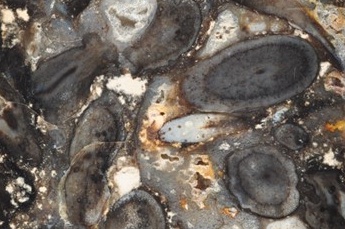Analysis of world-renowned plant fossils in north-east Scotland has revealed the oldest evidence for environmental clean-up on Earth, over 400 million years ago.
The discovery was made by scientists studying deposits from what is thought to be Earth’s oldest ecosystem on land in Rhynie, Aberdeenshire.
Known as the Rhynie Chert, the exquisitely detailed plants, spiders, fungi and other life were preserved by hot springs about 410 million years ago.
The hot springs also introduced toxic elements like arsenic, antimony and tungsten, but new research has shown that these toxic metals were soaked up by minerals that were deposited among the plants, with the aid of bacteria and fungi, limiting their impact on the environment.
Professor John Parnell from the University’s School of Geosciences led the study which has been published in the Geochemistry, Geophysics, Geosystems journal.
He commented: “This study is the first examination of the distribution of toxic elements in the Rhynie ecosystem.
“While there are no exposed rocks at Rhynie, the University has a valuable archive of samples from trenches and boreholes, which we analysed at the Aberdeen Centre for Electron Microscopy, Analysis and Characterisation in this study.
“Today, fungi are used to remediate land contaminated by harmful metals but the evidence from Rhynie shows how natural processes have helped clean the environment since life first colonised the land.”
Professor Parnell added: “Researchers at the University have studied the Rhynie Chert closely over several decades, including analysis of the earliest plants and mineralization by gold from the hot springs.
“This latest research is another chapter in the ongoing story of this globally important deposit, which continues to provide valuable insights into how the Earth behaves.”


